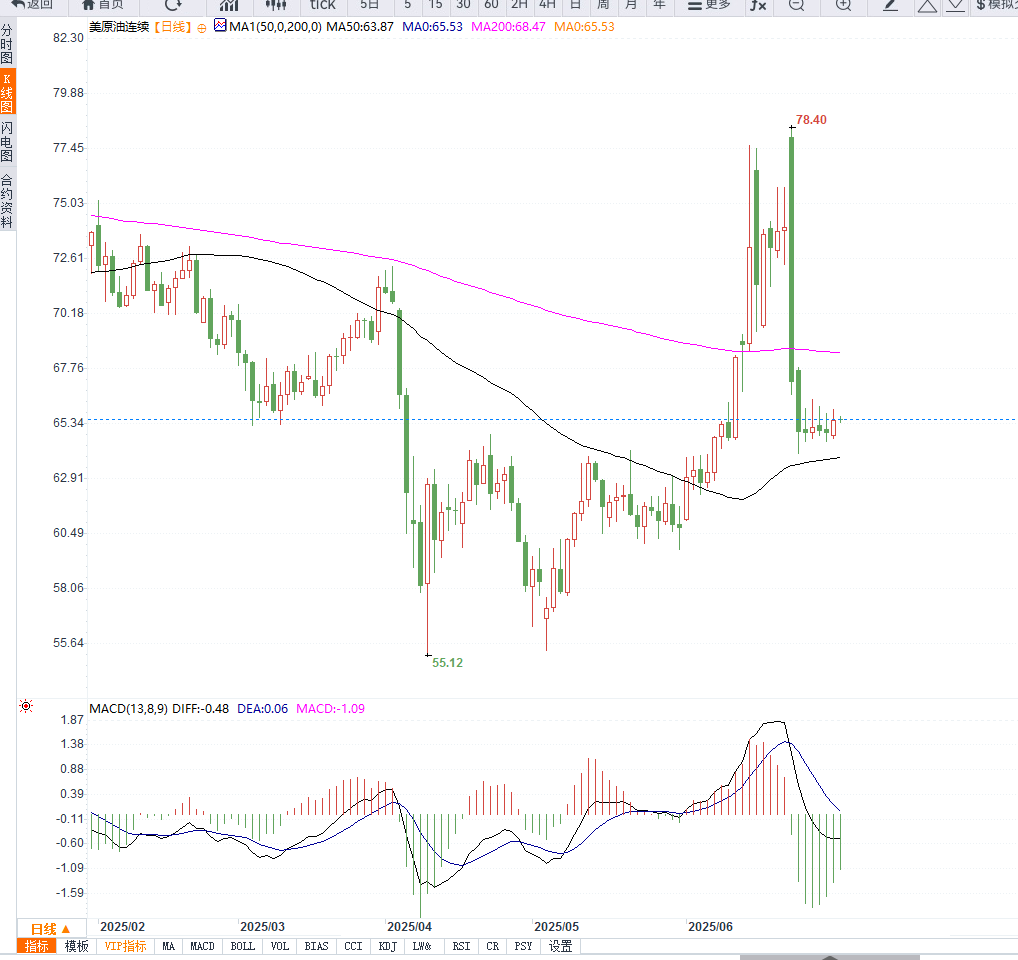Crude oil trading reminder: OPEC+ may continue to increase production, coupled with the elimination of risk premium, oil prices remain slightly volatile
2025-07-02 10:27:41
The outlook for crude oil demand was boosted by manufacturing data from Asian countries, with private survey data on Tuesday showing that factory activity in Asia expanded in June, which analysts said supported demand in the world's largest oil importer.
In terms of geopolitical risks, market concerns about supply disruptions in the Middle East have eased since the 12-day conflict between Iran and Israel ended, and Brent has fluctuated between $66.34 and $69.04 since June 25.

“Oil prices appear to be stuck in a tight range as geopolitical risks recede and the market remains uncertain about whether OPEC will increase production,” said Phil Flynn, senior analyst at Price Futures Group in New York.
OPEC+ is likely to continue the production increase of the previous months. The market generally expects that OPEC and its allies including Russia (OPEC+) will announce a further increase in production in August at the meeting on July 6. According to market research, four OPEC+ sources revealed that production is expected to increase by 411,000 barrels per day in August, continuing the production increase trend in May, June and July.
Data showed that as the world's largest oil exporter, Saudi Arabia's crude oil exports in June increased by 450,000 barrels per day from May, hitting a new high in more than a year.
Inventory data from the US suggests that supply may be easing. According to the American Petroleum Institute (API), US crude oil inventories increased by 680,000 barrels as of last week. Waiting for the official data from the US Energy Information Administration (EIA).
Expectations for the Fed's policy in the coming days are also affecting oil prices. IG analyst Tony Sycamore pointed out: "The US non-farm payrolls data to be released on Thursday will determine the market's expectations for the extent and pace of the Fed's interest rate cuts in the second half of this year."
Lower interest rates typically stimulate economic activity, which in turn drives up oil demand. In addition, it is important to keep a close eye on the upcoming trade negotiations and the July 9 deadline set by U.S. President Donald Trump for a tariff decision. Trump said on Tuesday that he was not considering extending that deadline, which heightened trade concerns and could weigh on market sentiment.
From a technical perspective, the daily chart of WTI shows that the price has been fluctuating above $65 recently, and the short-term moving average has flattened, indicating a stalemate between long and short positions. The 14-day relative strength index (RSI) is around 50, indicating that the market has not yet shown obvious overbought or oversold signals.
The initial support level below is $64.20, which may trigger a further correction if it falls below it; the resistance level above is around $66.80, which may test the $70 mark if it breaks through it. Overall, the technical trend resonates with the fundamentals, reflecting that the market remains on the sidelines before the OPEC+ meeting.

Editor's comments:
From the current market structure, oil prices are caught in the double gap of "policy game" and "geopolitical easing". On the one hand, OPEC+'s continuous increase in production has made the market supply tend to be loose; on the other hand, the recovery of manufacturing in Asian countries and the potential interest rate cut by the Federal Reserve have strengthened expectations on the demand side.
However, in the short term, Brent remains around $67, indicating that the market has not yet formed a directional breakthrough. The future direction of oil prices may depend on two key variables: first, whether the OPEC+ meeting on July 6 will continue to increase production, and second, whether the Federal Reserve will start the interest rate cut cycle ahead of schedule due to the impact of employment data.
- Risk Warning and Disclaimer
- The market involves risk, and trading may not be suitable for all investors. This article is for reference only and does not constitute personal investment advice, nor does it take into account certain users’ specific investment objectives, financial situation, or other needs. Any investment decisions made based on this information are at your own risk.










